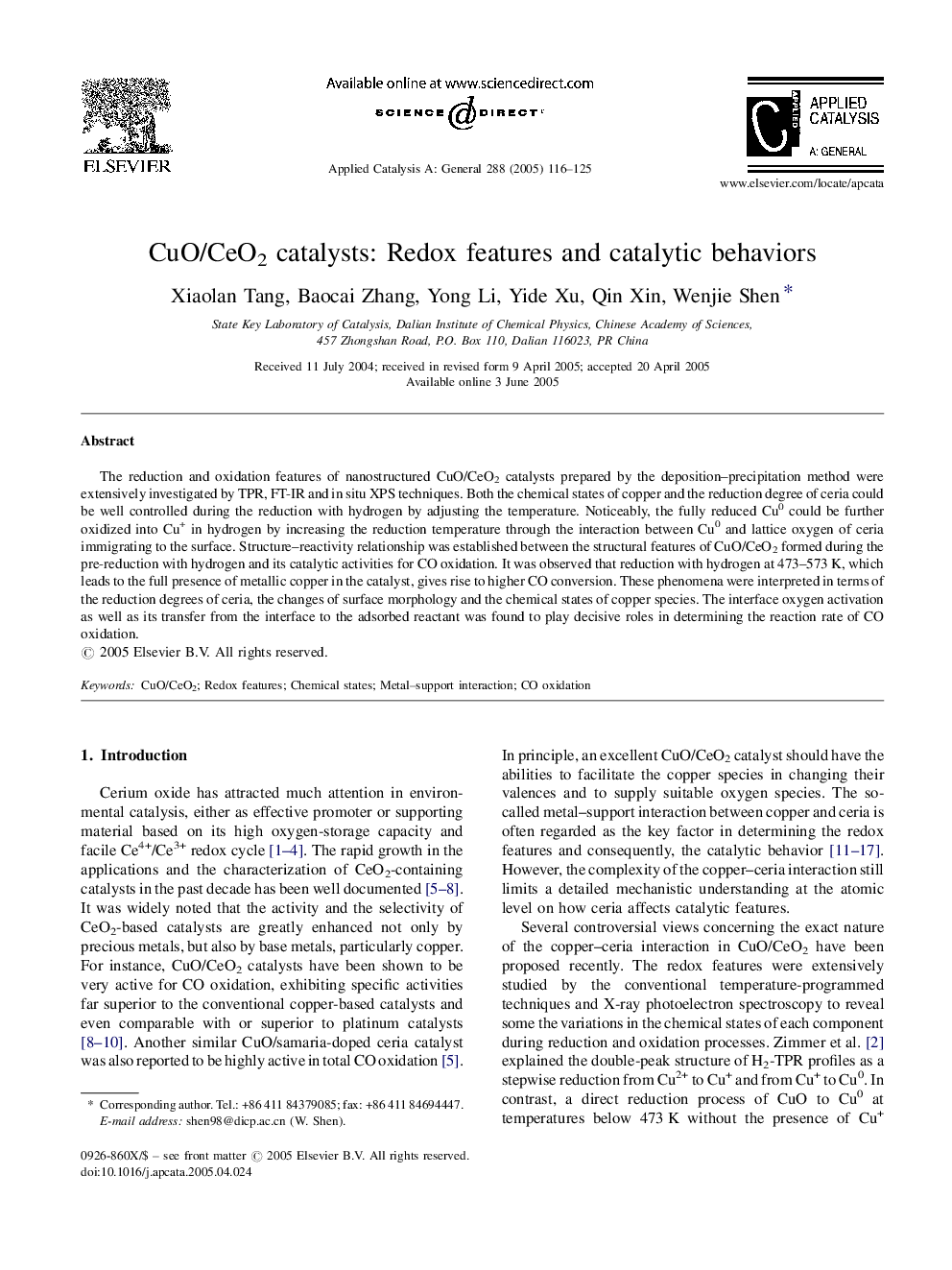| Article ID | Journal | Published Year | Pages | File Type |
|---|---|---|---|---|
| 9607922 | Applied Catalysis A: General | 2005 | 10 Pages |
Abstract
The reduction and oxidation features of nanostructured CuO/CeO2 catalysts prepared by the deposition-precipitation method were extensively investigated by TPR, FT-IR and in situ XPS techniques. Both the chemical states of copper and the reduction degree of ceria could be well controlled during the reduction with hydrogen by adjusting the temperature. Noticeably, the fully reduced Cu0 could be further oxidized into Cu+ in hydrogen by increasing the reduction temperature through the interaction between Cu0 and lattice oxygen of ceria immigrating to the surface. Structure-reactivity relationship was established between the structural features of CuO/CeO2 formed during the pre-reduction with hydrogen and its catalytic activities for CO oxidation. It was observed that reduction with hydrogen at 473-573Â K, which leads to the full presence of metallic copper in the catalyst, gives rise to higher CO conversion. These phenomena were interpreted in terms of the reduction degrees of ceria, the changes of surface morphology and the chemical states of copper species. The interface oxygen activation as well as its transfer from the interface to the adsorbed reactant was found to play decisive roles in determining the reaction rate of CO oxidation.
Related Topics
Physical Sciences and Engineering
Chemical Engineering
Catalysis
Authors
Xiaolan Tang, Baocai Zhang, Yong Li, Yide Xu, Qin Xin, Wenjie Shen,
